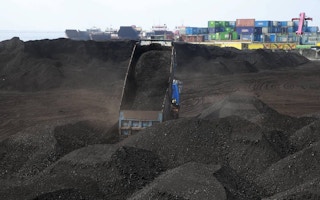Finance to provide electric power to nearly 1 billion people who live without it is rising—but too slowly to meet a global goal to reach everyone by 2030, an international body said on Monday.
Meanwhile, funding to expand cleaner, more energy-efficient cooking has declined, Sustainable Energy for All (SEforALL) said in a report that compared financing levels in 2015 and 2016 with the preceding two-year period.
In 20 countries that are home to nearly four-fifths of those who lack access to power, electrification finance rose by 56 per cent to an average of about $30 billion per year in 2015-2016.
But that is still far below the $52 billion needed each year, the report said.
And more than a quarter of the annual investment in 2015 and 2016, or $8 billion per year, was for grid-connected fossil fuel plants, double spending on them in 2013-14—something “the global community may be concerned to note”, it added.
China provided a fifth of that fossil-fuel expansion money.
SEforALL CEO Rachel Kyte, who is also special representative of the UN secretary-general for energy access, said the funding uptick for electric power was “nowhere near sufficient for us to reach the goal, or to meet the needs, or to make these communities resilient in the face of climate change impacts”.
In seven developing countries, including Nigeria, Malawi, Sudan and Afghanistan, investment in electrification dropped by 50 per cent or more in 2015 and 2016 compared to 2013-14, with sub-Saharan Africa as a whole receiving less money.
India, the Philippines, Bangladesh and Kenya garnered 86 per cent of investment in 2015-2016 for expansion of electricity access among the 20 countries studied.
Within that, the same four received the most money for new coal-fired power plants, which often do not help the poorest where they are not connected to the power grid, the report said.
“The benefits (fossil fuel plants) may bring in terms of energy access are countered by the negative impacts on human health and their contributions to global climate change,” it said.
The study looked at both international and domestic sources of funding averaged over two years.
The research highlighted the tiny fraction of funding going into off-grid renewable electricity, including solar.
A growing number of policymakers and experts view such systems as the fastest and most cost-effective way to boost electricity access, it said.
Annual investment in off-grid electricity rose to an average of $380 million in both 2015 and 2016, from $210 million per year in 2013 and 2014, but that investment accounted for just 1.3 per cent of the total finance tracked, the report said.
Kyte told the Thomson Reuters Foundation the figures pointed to “an under-appreciation of how important off-grid is going to be for these countries”.
She urged development banks to focus more on decentralised clean energy when helping countries expand power supplies.
Last week, close to 60 environment and anti-poverty groups based in Africa and beyond sent an open letter to the African Development Bank (AfDB) urging it to step up financial support for clean energy access on the continent.
After launching a “New Deal on Energy for Africa” in 2016, the bank’s financing for off-grid and mini-grid power rose to 6.6 per cent of its energy project approvals for 2016-2017, from less than 2 per cent in the two years before, the letter noted.
Under the New Deal, a partnership that aims to achieve universal access to electricity in Africa by 2025, the AfDB has committed to invest about $12 billion between 2016 and 2020, while leveraging up to $50 billion in co-financing.
But the civil society letter cited new data from the International Energy Agency estimating that, as sub-Saharan Africa’s population grows, 600 million of its people will still lack access to electricity in 2030, mainly in rural areas, “unless there are major changes to the status quo”.
New recipe needed
SEforALL’s Kyte said development banks were also failing to get to grips with the massive need for cleaner cooking, despite some states such as Rwanda and Indonesia ramping up efforts to wean people off polluting fuels like kerosene and charcoal.
Nearly 3 billion people around the world still cook with dirty fuels that cause indoor air pollution responsible for over 4 million deaths a year, especially among women and children.
Yet funding to catalyse a switch to cleaner cooking methods and heat sources remains “abysmally low”, dropping 5 per cent to $30 million per year in 2015-16, the SEforALL report said.
“There is something profoundly off in the way we are approaching this,” Kyte said.
The best way to boost clean energy access overall is for governments to put in place supportive policies, and to develop their capital markets to entice investment - but many still require international assistance to make that happen, she noted.
This story was published with permission from Thomson Reuters Foundation, the charitable arm of Thomson Reuters, that covers humanitarian news, climate change, resilience, women’s rights, trafficking and property rights. Visit http://news.trust.org/climate.










